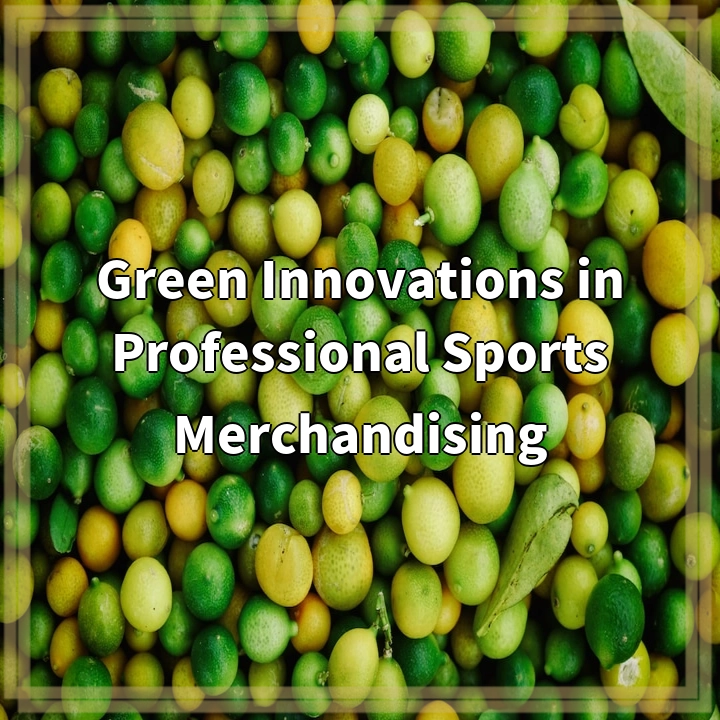
What it is:
Green innovations in professional sports merchandising refer to the implementation of eco-friendly practices and initiatives within the sporting industry’s merchandise sector. These innovations aim to minimize the environmental impact of production, distribution, and disposal of sports merchandise, while also promoting sustainability and responsible consumption.
Real-world problems:
The traditional sports merchandising industry faces several environmental challenges that need to be addressed:
Pollution and waste:
The production processes involved in sports merchandise often contribute to pollution, including excessive energy consumption, carbon emissions, and the release of harmful chemicals. Additionally, the disposal of non-recyclable or non-biodegradable packaging and products may contribute to overall waste production.
Resource consumption:
The production of sports merchandise relies heavily on natural resources such as water, energy, and raw materials. The excessive extraction and use of these resources may lead to environmental depletion, habitat destruction, and increased carbon footprint.
Unsustainable sourcing:
In many cases, sports merchandise is produced using unsustainable sourcing practices such as deforestation, overfishing, and unethical labor conditions. These practices can have long-lasting negative impacts on ecosystems and local communities.
Inefficient supply chain:
The complex supply chain of sports merchandise involves multiple stakeholders and often extensive transportation. This can lead to increased greenhouse gas emissions, inefficiencies in logistics, and overall environmental strain.

Solutions to the real-world problems:
1. Sustainable production:
Implementing sustainable practices in the production of sports merchandise can reduce pollution and waste. This can include using renewable energy sources, adopting eco-friendly manufacturing processes, and minimizing the use of harmful chemicals.
2. Responsible sourcing:
By ensuring that sports merchandise is sourced from ethical and sustainable suppliers, the industry can contribute to reducing habitat destruction and exploitative labor practices. This can involve certifications for responsible sourcing, promoting fair trade practices, and supporting local economies.
3. Recycling and waste management:
Encouraging recycling and implementing efficient waste management systems can significantly reduce the environmental impact of sports merchandise. This can involve using recyclable or biodegradable packaging materials, establishing take-back programs, and promoting responsible disposal practices.
4. Efficient supply chains:
Streamlining and optimizing the supply chain processes can lead to reduced carbon emissions and increased operational efficiency. This can be done through consolidation of shipments, utilizing green transportation options, and implementing better inventory management systems.
5. Promoting sustainable consumer behavior:
Educating consumers about the importance of sustainable choices and offering eco-friendly alternatives can drive responsible consumption. This can be achieved through labeling products with environmental information, providing incentives for eco-conscious purchases, and raising awareness through marketing campaigns.















